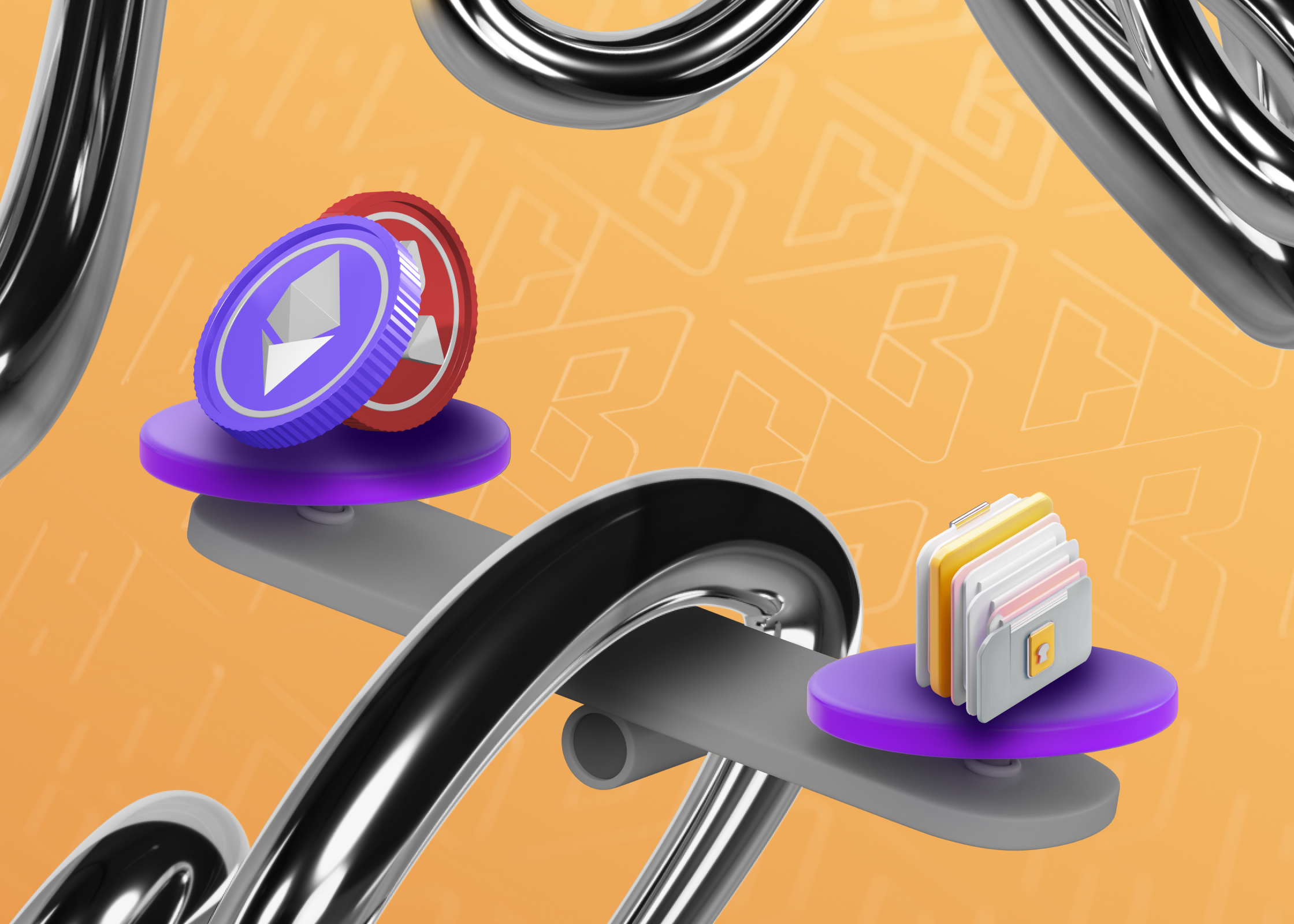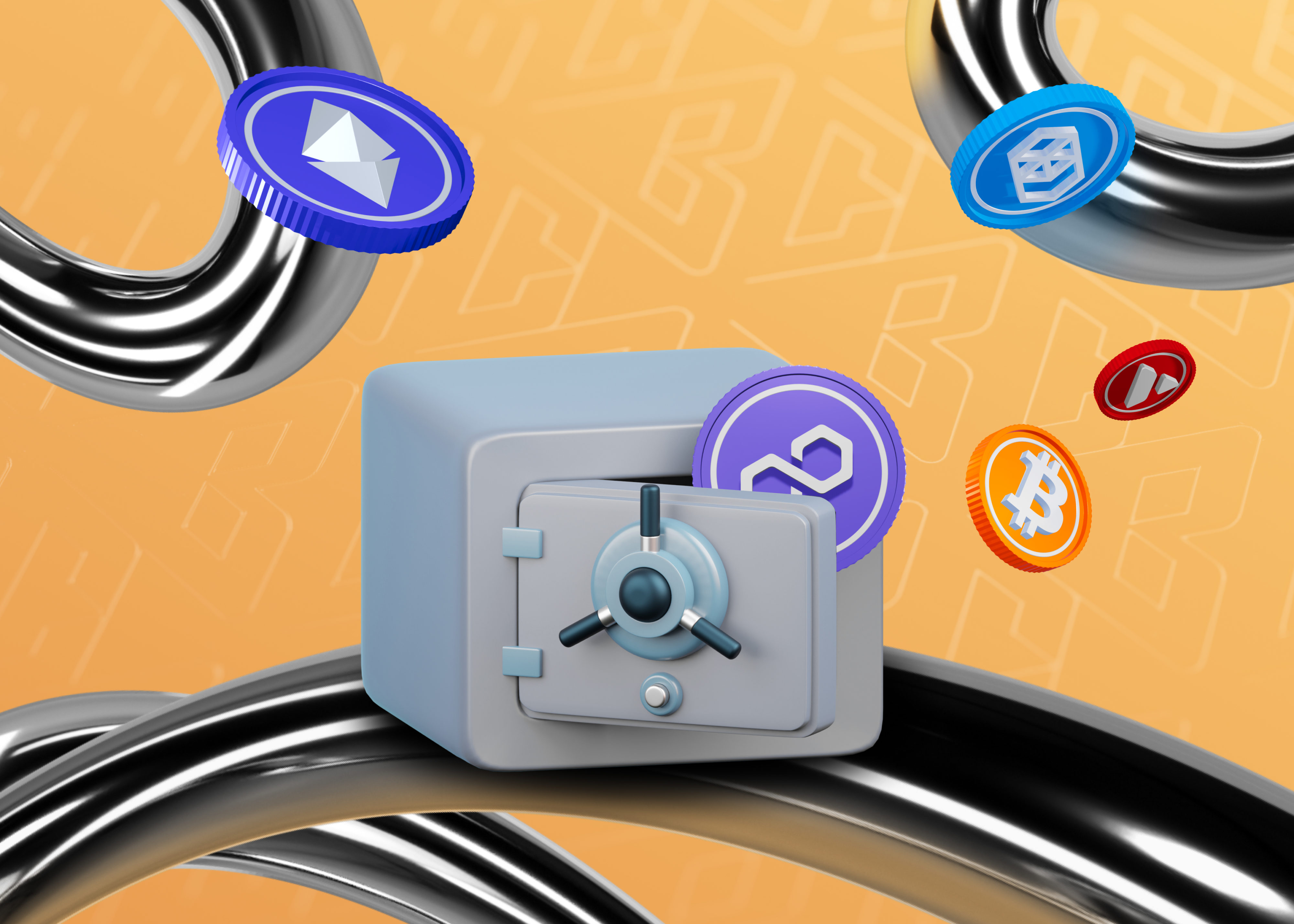Decentralized Exchanges: Who Really Owns Your Crypto?

You’ve probably heard the term «decentralized exchange». What are these exchanges for, and why do some people choose them over familiar traditional exchanges? We’ll explore this in our new article.
Centralized exchanges offer a user-friendly way to store and trade crypto, especially for newcomers to the crypto space. However, it’s crucial to understand that crypto on a centralized exchange isn’t entirely yours. The exchange stores the funds, and you’re simply granted access to manage them.
This centralization creates various risks:
- Security: Hackers can target exchange wallets, where vast sums are concentrated, leading to multi-million dollar thefts in the past.
- Legal: Becoming persona non grata on an exchange due to your nationality and missing a notice to withdraw funds can result in complete loss of access to your assets.
- Technical: For instance, the exchange may deem you an unreliable user if you deposit “tainted” crypto. It can lead to account restrictions, making it extremely difficult to recover your funds.
Decentralized exchanges (DEXs) address these issues. When using a decentralized exchange, you don’t transfer funds to the exchange’s wallets; instead, you interact directly with the exchange from your wallet. The absence of a single point of vulnerability enhances security, as the exchange doesn’t gain access to your funds except for the specific coin you’re exchanging.
Due to their nature, decentralized exchanges function differently from centralized exchanges, which can be challenging for beginners to grasp. Let’s delve deeper into how they work.
What are Decentralized Exchanges?
Decentralized exchanges (DEXs) are crypto trading platforms that operate without a centralized intermediary. On centralized exchanges, users deposit funds, and the exchange takes over asset management. All operations then occur within the platform and are reflected on the blockchain once you withdraw funds to your wallet.
On the other hand, decentralized exchanges use smart contracts on the blockchain to conduct transactions directly with your wallet. As a result, every action is recorded on the network. It allows wallet owners to control their assets and ensures high security and transparency.
To draw an analogy, centralized exchanges are like banks that hold your funds until you withdraw cash. Decentralized exchanges are more like currency exchange kiosks, where you only bring your money to make a transaction.
How Do Decentralized Exchanges Work?
Decentralized exchanges operate based on smart contracts that automatically execute trades when certain conditions are met. The trading process on a DEX typically looks like this:
- Wallet connection: You connect your crypto wallet to the decentralized exchange.
- Selecting a trading pair: You choose the desired pair for exchange, e.g., USDT-ETH.
- Granting permission to access funds: In most cases, the exchange will ask you to sign a transaction granting it access to a specific amount of tokens in your wallet. This permission is also called an “approve.”
- Executing the trade: You initiate the trade with your tokens at a specific price in a second transaction. The exchange automatically swaps the desired amount of tokens for your chosen token, provided the price has stayed the same since confirmation. Otherwise, the trade won’t execute, and you won’t lose anything.
One question remains: where does the exchange get its tokens? On a centralized platform, all trades occur using funds deposited by users. Decentralized exchanges also have such a mechanism called a «liquidity pool».
A liquidity pool is a virtual «pot» of crypto on a decentralized exchange. Each trading pair has its pot, where people add coins in equal proportions. When someone wants to exchange one crypto for another, the exchange happens with this liquidity pool.
Liquidity providers (yield farmers) receive a small percentage of each trade, usually from 0.05% to 0.5%. This way, all crypto market participants benefit. Regular users can access pools with stable asset prices, while yield farmers enjoy good annual asset returns.
Advantages of Decentralized Exchanges
Most of the benefits of decentralized exchanges stem from their decentralized structure:
- Simple trading interfaces: Most Decentralized exchanges have a straightforward interface. You select the desired pair and click one button. There are no more complex trading terminals.
- Complete client anonymity: Using a DEX doesn’t require registration, creating a personal account, or verification (KYC) with personal data.
- Maintaining control over funds: Decentralized exchanges don’t store crypto assets, so neither exchange developers nor authorities can freeze users’ funds or impose other restrictions.
- A quick listing of new tokens: A new token can appear immediately upon creation if someone provides liquidity on a decentralized exchange.
- Opportunity to earn by providing liquidity.
- Transparency: All transactions are recorded on the blockchain.
- Accessibility: Decentralized exchanges operate 24/7 without breaks and provide access to trading from anywhere in the world.
Thus, decentralized trading platforms give users complete control over their funds and full responsibility for their actions.
Disadvantages of Decentralized Exchanges
Despite all their advantages, decentralized exchanges also have drawbacks:
- In most modern decentralized exchanges, crypto exchange is only possible within a single network. Sometimes, decentralized exchanges allow trading across different networks using cross-chain bridges, making the trading process more expensive and time-consuming.
- Cross-chain bridges are virtual bridges between different blockchains. The crypto world is similar to a railway system: all networks exist and are used in parallel, but never intersect. Cross-chain bridges are special «crossings» between these rails. They allow the movement of crypto and other digital assets between blockchains, making the crypto world more connected and user-friendly.
- Complexity for beginners: Exchange requires signing multiple transactions, meaning users must have the network’s native coin in their wallet and the token they want to exchange.
- Limited trading functionality: Unlike centralized exchanges, decentralized exchanges often serve for simple exchanges of one coin for another. So, if you want to trade with borrowed funds using leverage, you must use other decentralized applications.
- Irreversibility of transactions: All trades on decentralized exchanges are irreversible, like other blockchain operations.
- Low operation speed: You won’t notice this in everyday use, but you’ll need to adjust transaction parameters and pay more for it during high volatility.
- Risk of impermanent loss: Liquidity providers may face impermanent losses due to changes in the price ratio of assets in the liquidity pool.
- Lower liquidity: For some assets or trading pairs, liquidity on decentralized exchanges may be lower than on large centralized exchanges.
- Vulnerability to price manipulation: Lower trading volumes and peculiarities of pricing algorithms can make decentralized exchanges more vulnerable to price manipulation.
- Vulnerability to scam projects due to lack of centralized listing.
- Risk of hacker attacks on smart contracts: Vulnerabilities in smart contract code can cause users or liquidity providers to lose funds.
- Regulatory uncertainty: Remember that the legal status of decentralized exchanges in many jurisdictions remains unclear, which can create risks for users and developers.
Nevertheless, these drawbacks are often outweighed by the advantages of trading on decentralized platforms, which is why experienced market participants usually prefer using decentralized exchanges daily.
Decentralized Exchanges: Conclusions
Decentralized exchanges represent a significant step in the evolution of the crypto world. The emergence of the first exchange, Uniswap, in 2019 changed the lives of active market participants. It was followed by rapid decentralized application (DApp) ecosystem development. Just four years later, we have DApps for every taste and color, and using them is often more accessible and more enjoyable than centralized exchanges.
Decentralized exchanges provide users with greater security, control over their assets, and access to various financial instruments. They embody the crypto movement’s fundamental principles: decentralization, transparency, and the absence of intermediaries.
However, decentralized exchanges also face technical limitations, liquidity issues, and regulatory uncertainty. Improving cross-chain functionality, optimizing algorithms to reduce fees, and enhancing user-friendliness are critical areas for DEX development.
Decentralized exchanges may already be the preferred choice for experienced users who value security, independence, and access to a wide range of DeFi tools. At the same time, beginners might find it more convenient to start with centralized platforms that offer a more intuitive interface and additional support.
Ultimately, decentralized exchanges and centralized exchanges will likely coexist, serving different market segments and user preferences.
In the following article, we’ll compare centralized and decentralized exchanges and determine which is better for crypto beginners to use. Stay tuned for new articles from Banana Education!





 Joining Us?
Joining Us?